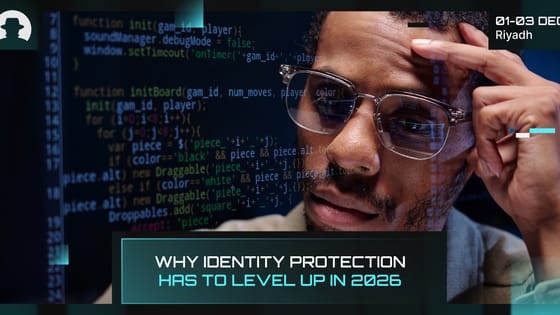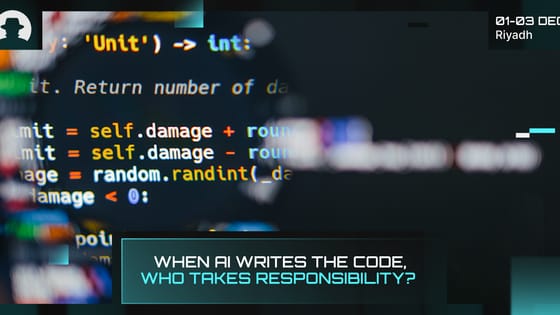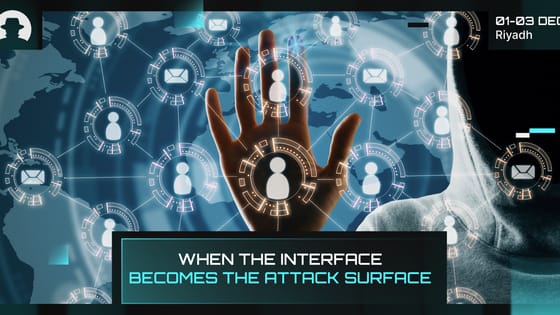
Why identity protection has to level up in 2026
Identity fraud in 2026 is AI-driven, industrial and costly. Learn how deepfakes, fraud rings and new cyber insurance rules are changing identity protection.
Read More
More than 90% of breaches still begin with people, not tech. Attackers are evolving their tactics fast – moving beyond the inbox to encrypted apps, mobile, collaboration platforms, and even voice calls. CISOs know this. And that rapid evolution is a serious concern.
A September 2025 report from Dune shows just how wide the readiness gap has become. Researchers asked CISOs about the emerging threats that are redefining cyber risk; and the findings show that while security teams continue to simulate email-based phishing, attackers are already thriving in channels that most organisations don’t monitor or train against.
We want to look at this from an investor point of view – because it holds clues about where cybersecurity spend is heading.
Email remains a top concern for CISOs (85%). But phishing today is AI-personalised, persistent, and happening across multiple stages. AI-crafted emails drive three times more interaction than traditional ones; and of those who do click, 30% go on to submit MFA credentials.
But the bigger story we see in the Dune report is how fast attackers are shifting elsewhere. Sixty-four percent of organisations saw attacks via encrypted or informal channels in the past year, but 0% of CISOs run simulations there, and only 6% express high confidence in users spotting them. Collaboration platforms like Slack and Teams are just as exposed: 91% don’t simulate attacks there, even though attackers are exploiting IT or helpdesk pretexts in those channels.
Lee Whatford (CISO at Domino’s Pizza) voiced this fear during a panel discussion at Black Hat MEA 2024: “One of the big things for me is the articulation of risk to the business…my top level biggest worry is that I haven’t actually found the exposure points across the business.”
And those blind spots are exactly what attackers are exploiting.
The readiness gap is most significant on mobile. Of the CISOs surveyed by Dune, 71% rank smishing among their top concerns – but only 27% simulate it. Likewise, 59% are worried about vishing, yet just 15% run simulations. Users respond faster on phones; often on unmanaged devices; and with less scrutiny. And that makes exploitation much easier.
In that panel discussion with Whatford, Les Correia (Executive Director - Global Head of Application Security at Estée Lauder Companies) warned that cultural context plays a role here: “People work differently. You have to think about social engineering, and context. Like here [in Saudi Arabia], people are really warm…a threat actor could use that to get more information.”
That warmth, played out over a quick voice call or WhatsApp message, becomes a vector.
The data from Dune shows a security culture gap as much as a technology one.
As Alex Attumalil (Global CISO, Under Armour) said during the BHMEA panel, “Cyber awareness shouldn’t be a check mark. It should be continuous. We know that people aren’t trying to do bad things…but they may not know what the right thing is.”
That acknowledgement is important. The user layer isn’t (usually) malicious, but it is breaking under the strain of new attack techniques.
The threat group Scattered Spider (aka UNC3944/Octo Tempest) is a good example of this danger, and features in Dune’s research. They blend encrypted messaging, SMS, collaboration tools, and deepfake voice to social engineer helpdesks and contractors. The results: over USD $1 billion in estimated losses, 71 million records exposed, and more than 100 confirmed breaches across Fortune 500 companies.
This is what the ‘externally initiated insider risk’ looks like: attackers manipulating staff into becoming the access vector. And it’s exactly the kind of scenario that keeps CISOs awake at night.
Encouragingly, security leaders aren’t resigned to defeat. Their top priorities right now are:
We need to move from static compliance tick-boxes to dynamic, behaviour-driven programmes that identify who’s vulnerable, why, and intervene before compromise.
For investors, this can be taken as a sign that the market is tilting towards companies that…
So investors should press vendors on whether they can measure reductions not just in click rates, but in full compromise chains (like MFA submission after a click). Because that’s the metric CISOs (and their boards) will care about.
CISOs at Black Hat MEA spoke candidly about what keeps them awake at night: blind spots, accountability, and culture. The Dune report puts numbers to those fears. Together, they show a security landscape where the user layer is now the primary attack surface – and where investors who back companies that close these gaps can both strengthen enterprises and unlock strong growth.
Join the newsletter to receive the latest updates in your inbox.

Identity fraud in 2026 is AI-driven, industrial and costly. Learn how deepfakes, fraud rings and new cyber insurance rules are changing identity protection.
Read More
New research from Veracode and Gartner shows that while AI is accelerating software development, it’s also accelerating risk.
Read More
Three recent campaigns (Tsundere, Matrix Push C2, and Sturnus) show attackers shifting command-and-control and data theft into places we treat as harmless UX plumbing.
Read More